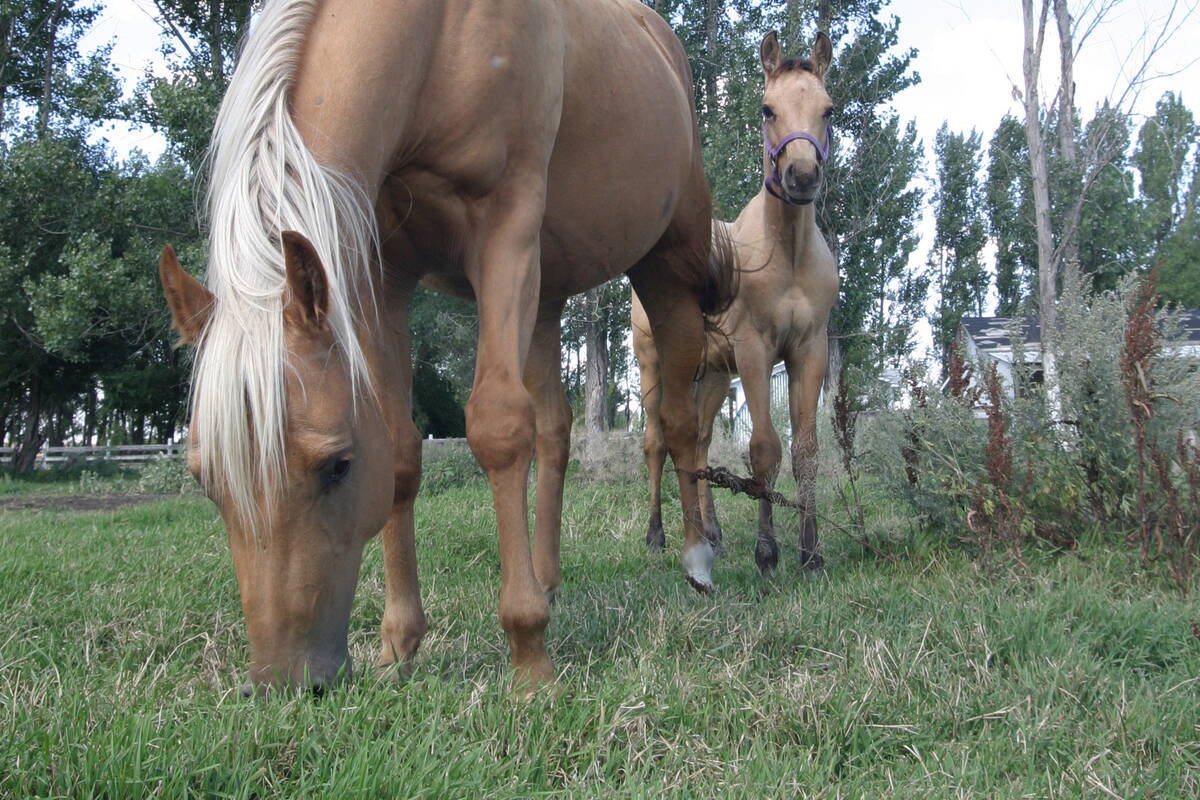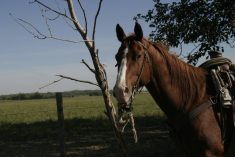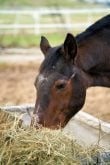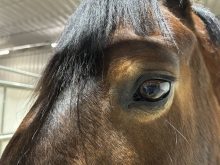The horse’s tooth, like the tooth of any other species, is subject to decay. It is only recently that the nature of the tooth decay and its implications to the health of the horse have been recognized and identified.
The reasons for this are twofold. The abilities of the equine dental provider to recognize and identify the tooth decay has advanced and in addition there is likely an increasing incidence of dental caries in horses related to the modern equine’s diet and lifestyle.
The cause of dental caries in horses is likely multifactorial. Processed feedstuffs and reduced long-stem forage intake contribute to changes in the pH of the horse’s mouth, and interrupts the full expression of the elliptical chewing pattern of the horse.
Read Also

Ignoring growth plates sabotages young horse development
Young horse training plans and workloads must match their skeletal development. Failing to plan around growth plates can create lifelong physical problems.
Proper healthy development of the young horse’s tooth is highly dependent upon a high-fibre diet. The high-fibre diet initiates chewing forces which shape the adult tooth to be resilient and strong. It triggers key physiological occurrences in the dental arcade such as proper shedding of the baby teeth and/or caps, eruption of the molars and development of the continuously erupting teeth in the dental arcade.
Tooth decay — known as dental caries to veterinarians — is a condition where dental surfaces in the horse’s mouth have been eroded away.
Caries is a disease process which leads to tooth decay. Tooth decay is the breakdown of the structure of the tooth and when the decay becomes visible it is termed a cavity. As the decay progresses, the structural integrity of the tooth is compromised, leaving it vulnerable to fracture, exposure of sensitive nerve endings and pulp cavities and root infection.
There are typically two types of tooth decay or caries seen in horses — infundibular caries and peripheral caries.
The infundibulum is an anatomical structure that is unique to the equine tooth. It is an invagination of the enamel folds on the grinding surface of the horse’s tooth and is thought to substantially increase the surface area for grinding and enhance the durability of the tooth.
Equine infundibular caries is a unique nuance of the horse. Decay in the infundibulum of the upper cheek teeth happens if defects occur within the invaginated infundibula and allow food material and bacteria to accumulate in the centre of the tooth.
Fermentation and acid production leads to decalcification and weakening of the surrounding dental tissue. Once the process of decay has begun, it continues to progressively worsen and may escalate to the point where the tooth is weakened and fractures.
The fractured tooth is then susceptible to bacterial entry of the root, infection and abscessation. Only the upper cheek teeth can contract infundibular caries as they are the only cheek teeth with the particular infundibular structure. The infundibulum of the upper cheek teeth, actually two per tooth, is subject to food and bacteria getting stuck in these invaginated areas thus placing them at a higher risk for decay. The lower cheek teeth do not have an infundibulum. The incisor teeth do have a singular infundibulum, however, caries are extremely rare in the incisors.
The second type of caries which is much less common is that which forms along the gum line of the tooth. These type of caries are often indicative of other functional and structural problems in the mouth.
Clinical symptoms of dental caries in the horse may not always appear and when they do appear their presentation can vary due to the position of the tooth involved and the severity of the caries process.
Some horses do not exhibit any clinical signs of discomfort, while others will show symptoms of pain in the mouth such as hypersalivation, difficulty chewing feed, sensitivity or aversion to drinking cold water, loss of appetite, and may show a change in behaviour. If the problem is severe enough there may be a foul odour from the mouth or discharge from the nostril if the sinuses have become involved.
A thorough oral examination with a full mouth speculum, bright headlight, dental mirror and fine dental probe are necessary for the diagnosis of infundibular decay. Visual examination will often reveal abnormal food packing into the centre of the occlusal surface of the tooth. The tooth is probed to assess the severity of the decay and degree of tooth involvement. It is important to assess the involvement of the decay, which may include radiographs, as that assessment determines the direction for further treatment.
Proper equilibration of the dental arcade will be of primary importance in the followup dental work as it will spare the weakened tooth from unnecessary forces.
Restoration of infundibular caries in horses is in its infancy in comparison to restoration of cavities in human dentistry. Although principles and applications from human dentistry may have some similarities, repair of the dental caries in the horse is a complicated process due to the structure of the tooth and the nature of the pathology.
Infundibular caries is often positioned within the central plug of the tooth intimately positioned next to dental pulps and nerves. The nature of the work, the compatibility of the filling composites and the mastication forces of the horse are just a few challenges to the procedure. Currently there are only a handful of competent practitioners in North America providing this service. If the caries are fairly advanced, extraction of a tooth may be the only sensible remedy. This is typically seen in older horses.
Ideally early recognition of the disease process and restoration preserves the integrity of the tooth. Therefore the possibility exists to alleviate the inevitable suffering these diseased teeth cause to the horse with time.

This article was originally published on the Manitoba Co-operator.
















